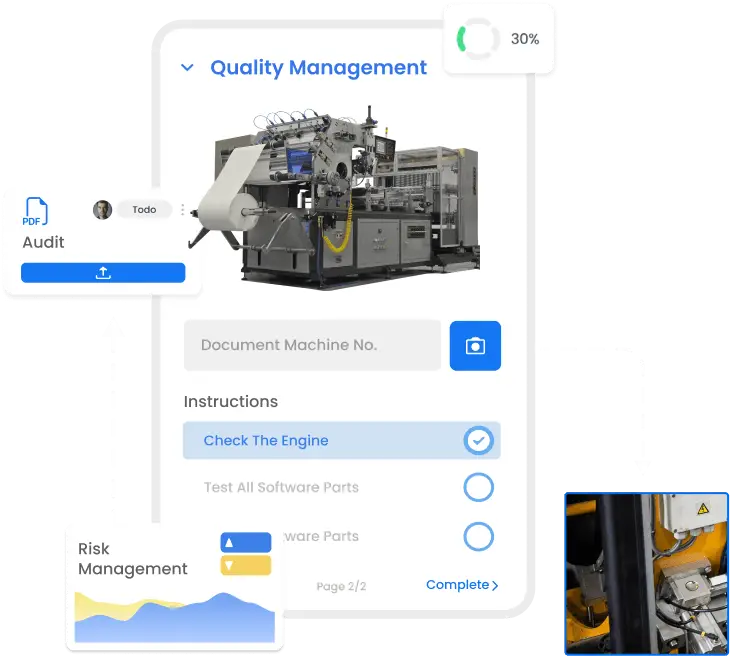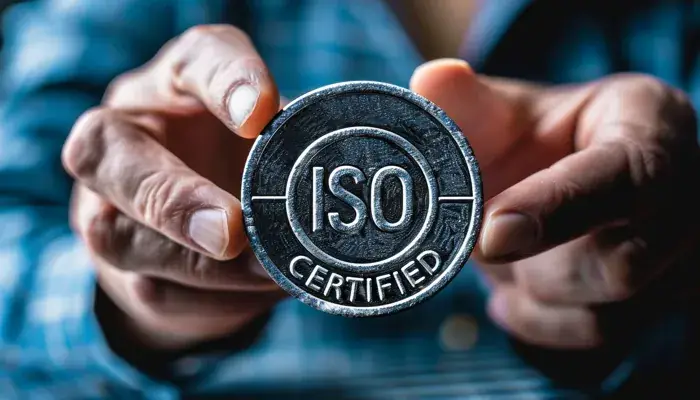Summary: Quality auditing, a component of a quality control system, plays a crucial role in evaluating and managing the quality of various organizational processes. This detailed article explores the importance of quality auditing by explaining the audit and control processes involved. Whether you work as an auditor or a Quality Control Audit owns a business, this piece offers insights into how quality auditing impacts organizational success.
Quality auditing is a process aimed at assessing an organization’s existing quality management system. It includes types of audits like management system audits, process audits, and compliance audits carried out by external auditors.
What Does Quality Auditing Entail?
Quality Control Audit involves an impartial review of an organization’s processes, systems, and activities to determine compliance with established quality standards. It entails evaluating controls’ effectiveness, identifying improvement areas, and ensuring Adherence to requirements. Quality auditing offers insights into an organization’s performance, contributing to maintaining and enhancing its reputation.
The Significance of Quality Management
The Role of Quality Control
Quality Control Audit is an aspect of the quality management process focusing on monitoring and validating product and service quality. Organizations implement quality control measures to detect and correct defects or deviations from standards, ensuring uniform and satisfactory customer experiences. It is essential to preserve customer satisfaction, reduce rework expenses, and safeguard the organization’s standing.
Quality auditing is a process crafted to evaluate the effectiveness and suitability of an organization’s Quality Control Audit policies and procedures, whether conducted internally or externally. Internal audits, such as first-party audits, scrutinize the organization’s processes, while third-party audits carried out by auditors offer an evaluation. Whether internal or external, auditors ensure that processes operate according to established standards and are interested in providing precise audit outcomes.
Standards for Quality Control
Organizations adhere to established quality control standards to achieve Quality Control Audit. These standards furnish guidance and best practices for maintaining quality levels across industries.
Quality control standards such as ISO 9001 for managing quality systems, ISO 13485 for devices, and ISO/IEC 17025 for testing and calibration labs are critical in helping organizations establish quality control processes and earn the trust of stakeholders.
Key Components of Quality Control
Quality Control Audit involves components that contribute to maintaining and enhancing the quality of products and services. These components include;
- Setting quality requirements and specifications
- Implementing process controls to prevent defects
- Carrying out inspections and tests to ensure quality
- Taking actions to address conformities
- Monitoring key performance indicators
- Documenting quality control audit procedures and records
Understanding Audit Procedures
Audits are structured evaluations of processes, systems, or entities to check compliance with established standards and assess their efficiency. They offer a perspective on an organization’s operations, pinpointing areas for enhancement while ensuring accountability.
Internal Auditing
Internal audits are performed by auditors within the organization who assess processes or activities independently. They evaluate the sufficiency and effectiveness of controls, risk management practices, and policy adherence. Internal audits play a role in identifying inefficiencies in processes, managing risks effectively, and complying with guidelines and external regulations.
External Inspections
External assessments are carried out by auditors not affiliated with the organization under review. These auditors evaluate the organization’s procedures, systems, and controls to assess Adherence to standards, regulations, and contractual commitments. Regulatory bodies, certification bodies, or clients frequently conduct audits to ensure that the organization meets the standards and upholds transparency.
Independent Audits
Third-party audits are conducted by auditing firms or organizations that are not connected to the entity being audited. These audits assess the organization’s practices and Compliance with standards and regulations. Organizations often opt for third-party audits to secure certifications or demonstrate their dedication to quality and compliance with stakeholders.
Varieties of Quality Audits
Quality audits can be classified into types based on their focus and extent. The primary categories of quality audits include;
Process Reviews
Process reviews assess the efficiency and effectiveness of processes within an organization. These reviews analyze process controls, Adherence to documented procedures, and achieving desired results. Process reviews help identify process bottlenecks, noncompliance issues, and areas for enhancement, thereby improving process performance.
Product Assessments
The Product assessments involve inspecting products or services to ascertain their Compliance with quality requirements and specifications. Product evaluations cover product features, performance, longevity, and overall quality. These assessments usually involve inspections, tests, and customer feedback analysis to ensure that products meet or exceed customer needs.
Reviewing Systems
System reviews gauge how an organization’s quality management system (QMS) functions. They examine whether the organization follows established policies, procedures, and standards. System reviews look into the design, implementation, and upkeep of the QMS to ensure it aligns with the organization’s goals and promotes enhancements.
How to Implement a Quality Management System?
Implementing a quality management system (QMS) requires a strategic approach that aligns with an organization’s objectives and operational requirements. It involves defining quality policies, setting objectives, and establishing processes to achieve and maintain quality standards. An effective approach to quality management involves engaging stakeholders at all levels of the organization to ensure buy-in and support for quality initiatives. This collaborative effort helps create a culture of quality that permeates throughout the organization and drives continuous improvement.
Quality improvement methods such as Six Sigma, Lean Six Sigma, and Kaizen provide structured frameworks for identifying and addressing quality issues within an organization. These methodologies focus on eliminating waste, reducing variation, and enhancing process efficiency to deliver superior products and services.

Advance your quality through digitization
- Inspections & Audits
- Safety & Compliance
- Risk assessment
- Corrective Actions & Reporting
The Quality Review Process
The process of evaluating quality involves phases that collectively provide an assessment of an organization’s effectiveness. Critical stages in this review process include;
Planning for Review
This step involves outlining the audit scope and goals, establishing audit criteria and standards, and determining resources. At this stage, auditors develop a plan detailing the audit timeline, activities, and responsibilities.
Conduct involving Reviews
Activities during this phase include collecting information, conducting interviews, reviewing documents and records, and making observations. Auditors evaluate an organization’s processes, systems, and controls against predetermined audit criteria. They gather evidence to back up their discoveries and pinpoint any deviations or areas that can be enhanced.
Reporting on Audits
Following the completion of an audit, the auditor compiles a report summarizing their findings, conclusions, and suggestions. The report highlights any discrepancies identified during the audit. I might propose ways for improvement.
Subsequent Audits
Subsequent audits may be carried out to confirm that the corrective measures implemented by the organization in response to the audit findings are compelling.
The Significance of Quality Auditing
Quality auditing plays a role in ensuring prosperity and customer contentment. Here are some key reasons why quality auditing is crucial;
Ensuring Adherence
Quality audits assist organizations in ensuring Adherence to guidelines, industry benchmarks, and regulatory demands. Through regular audits, organizations can spot deviations from required standards. Promptly rectify them. Compliance with quality standards helps reduce financial risks while boosting an organization’s standing and trustworthiness.
Improving Quality Management Systems
Quality evaluations gauge how an organization’s quality management system (QMS) functions. Supports its goals. By conducting assessments, organizations can pinpoint areas of improvement within their QMS and address any shortcomings. Make enhancements—this is ongoing. Refinement of the QMS leads to productivity, tighter process oversight, and more significant customer approval.
Addressing Potential Hazards
Evaluations help uncover risks and weaknesses in an organization’s operations and structures. Examining controls and risk management strategies, evaluations empower organizations to manage risks proactively and lessen their impact proactively. This proactive risk management strategy bolsters durability, reduces the likelihood of incidents or breakdowns, and safeguards the organization from financial harm.
Fostering Continuous Enhancement
Quality evaluations offer insights into an organization’s strengths, weaknesses, and opportunities for growth. These assessments cultivate a culture of improvement by highlighting areas for development or enhancement. Organizations can leverage evaluation results to implement measures, streamline processes, and elevate performance. The feedback from evaluations serves as a resource for making choices and instigating positive organizational transformations. Continuous enhancement endeavors stimulate innovation, boost customer satisfaction, and uphold an advantage in the marketplace.
Auditing Rules
When it comes to auditing, there are a variety of standards and regulations in place to help ensure that audits are carried out effectively and reliably. Here are some fundamental standards and rules that are commonly adhered to in the realm of quality auditing;
ISO 9001: The Quality System Standard
ISO 9001 is a recognized standard for quality management systems on a scale. It outlines requirements and recommendations for organizations that establish and uphold quality management systems. The core principles of ISO 9001 include customer focus, adopting a process-oriented approach, continuous improvement, and making evidence-based decisions. By adhering to ISO 9001, organizations can maintain quality levels, boost customer satisfaction, and meet standards.
Regulatory Mandates
Apart from standards like ISO, organizations must adhere to industry regulations and mandates. These regulations can differ based on the sector in question, whether healthcare, manufacturing, or finance. Regulatory bodies set forth guidelines that organizations must comply with to ensure product safety, safeguard data integrity, uphold practices, and promote sustainability.
Professional Standards and Recommendations
Furthermore, professional auditing bodies and associations offer their standards and guidelines for auditors. The Institute of Internal Auditors (IIA) has set up the International Standards for the Professional Practice of Internal Auditing (Standards), which define the principles and procedures for conducting audits. These professional standards uphold auditors’ honesty, impartiality, and proficiency, fostering uniformity and excellence in audit procedures.
The Role of an Auditor
They are tasked with independently and objectively evaluating an organization’s procedures, systems, and controls. Below are some aspects of an auditor’s responsibilities;
Qualifications and Duties of Auditors
Auditors should possess the qualifications, knowledge, and capabilities to conduct audits. They must have an understanding of audit principles, methods, and guidelines. Auditors are responsible for planning and executing audits, gathering and analyzing data, pinpointing discrepancies, and offering suggestions for enhancement. They must maintain independence, objectivity, and confidentiality throughout the audit process.
Audit Independence
Independence holds importance in auditing. Auditors must remain unbiased and free from conflicts of interest or external pressures that could jeopardize the integrity and impartiality of the audit process. Internal auditors should stay independent from their operations, while external auditors should maintain independence from the organization under review.
The Role of the Lead Auditor
In audit teams or intricate audits, a lead auditor could be designated. The auditor’s role involves supervising and organizing the audit process. The lead auditor may also delegate tasks to team members, review their work, and compile the results into the final audit report. Acting as the liaison between the audit team and the organization’s management is another critical responsibility of the lead auditor.
FAQ | Quality Auditing
What is the difference between an internal and an external audit?
An internal audit is conducted by auditors who are part of the organization being audited, while independent auditors conduct an external audit. Internal audits evaluate internal controls, risk management practices, and Compliance with internal policies and procedures. External audits assess Compliance with external standards, regulations, and contractual obligations, often conducted by regulatory bodies, certification bodies, or clients.
How often should audits be conducted?
The frequency of audits depends on various factors, including the organization’s size, industry, and risk profile. Audits can be conducted annually, biannually, or at regular intervals determined by regulatory requirements or internal policies. Some organizations may also conduct audits on specific processes or projects as needed. It is essential to establish an audit schedule that ensures sufficient coverage of critical processes and allows for timely identification of non-conformities.
Can audits result in certification?
Yes, audits can result in certification. Accredited certification bodies conduct certification audits to assess an organization’s Compliance with specific standards or regulations. If the organization successfully meets all the requirements, they are awarded a certification or a compliance certificate. Certification validates an organization’s adherence to quality standards and can enhance its reputation and market competitiveness.
What are the key benefits of a quality audit?
Some key benefits of quality audits include:
- Identifying non-conformities and areas for improvement
- Ensuring compliance standards, regulations, and best practices
- Enhancing process efficiency and effectiveness
- Promoting continuous improvement and innovation
- Increasing customer satisfaction
- Strengthening internal controls and risk management
- Assuring stakeholders and customers
- Facilitating decision-making based on reliable data and insights.
Image: Adobe Stock – Copyright: © Bartek – stock.adobe.com







